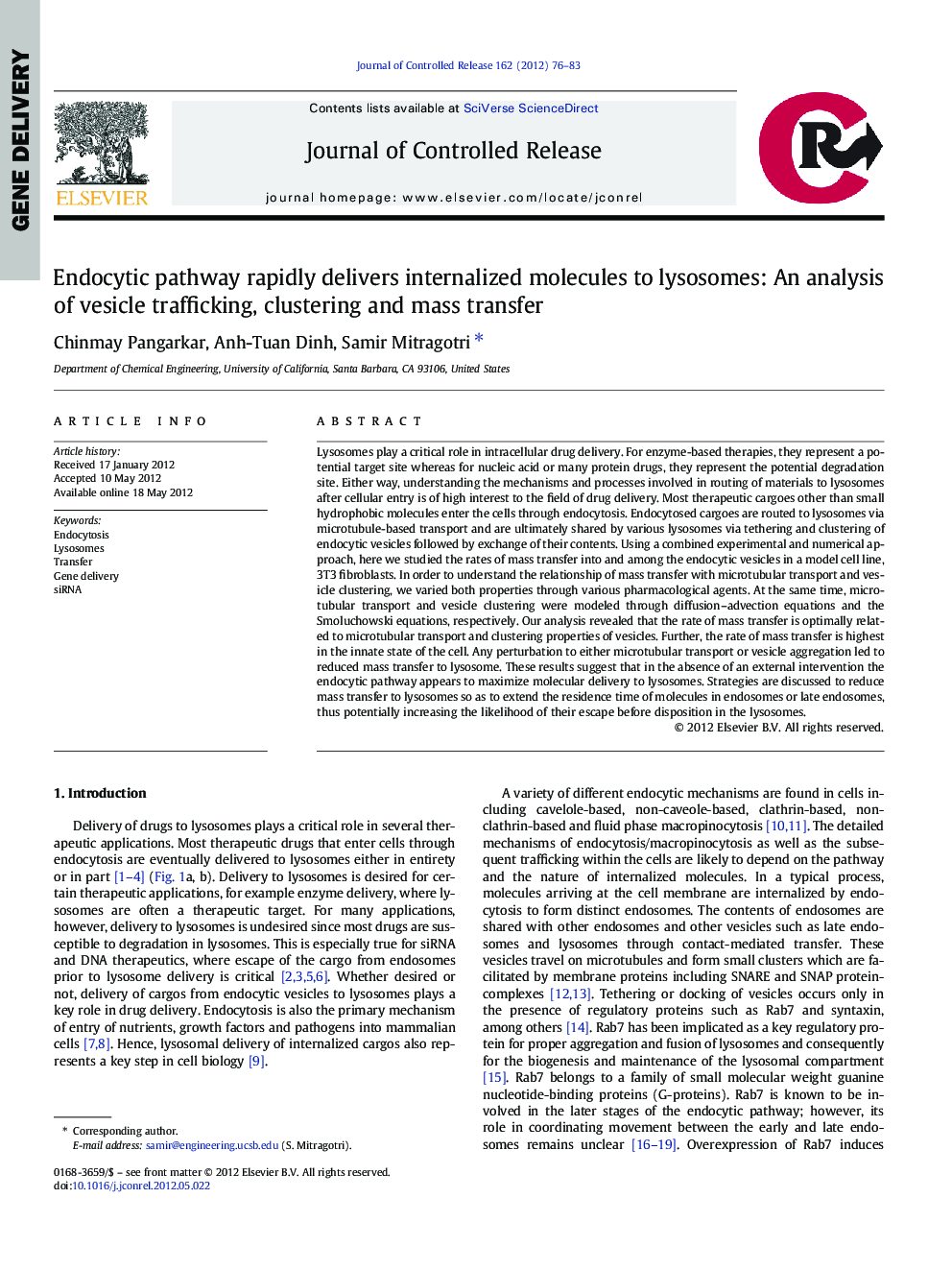| Article ID | Journal | Published Year | Pages | File Type |
|---|---|---|---|---|
| 1424586 | Journal of Controlled Release | 2012 | 8 Pages |
Lysosomes play a critical role in intracellular drug delivery. For enzyme-based therapies, they represent a potential target site whereas for nucleic acid or many protein drugs, they represent the potential degradation site. Either way, understanding the mechanisms and processes involved in routing of materials to lysosomes after cellular entry is of high interest to the field of drug delivery. Most therapeutic cargoes other than small hydrophobic molecules enter the cells through endocytosis. Endocytosed cargoes are routed to lysosomes via microtubule-based transport and are ultimately shared by various lysosomes via tethering and clustering of endocytic vesicles followed by exchange of their contents. Using a combined experimental and numerical approach, here we studied the rates of mass transfer into and among the endocytic vesicles in a model cell line, 3T3 fibroblasts. In order to understand the relationship of mass transfer with microtubular transport and vesicle clustering, we varied both properties through various pharmacological agents. At the same time, microtubular transport and vesicle clustering were modeled through diffusion–advection equations and the Smoluchowski equations, respectively. Our analysis revealed that the rate of mass transfer is optimally related to microtubular transport and clustering properties of vesicles. Further, the rate of mass transfer is highest in the innate state of the cell. Any perturbation to either microtubular transport or vesicle aggregation led to reduced mass transfer to lysosome. These results suggest that in the absence of an external intervention the endocytic pathway appears to maximize molecular delivery to lysosomes. Strategies are discussed to reduce mass transfer to lysosomes so as to extend the residence time of molecules in endosomes or late endosomes, thus potentially increasing the likelihood of their escape before disposition in the lysosomes.
Graphical abstractFigure optionsDownload full-size imageDownload high-quality image (119 K)Download as PowerPoint slide
